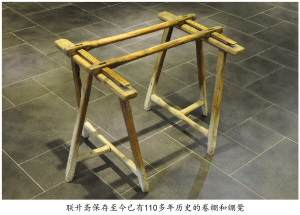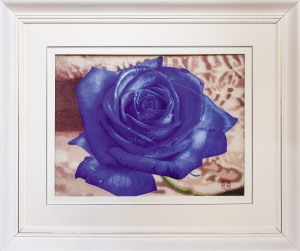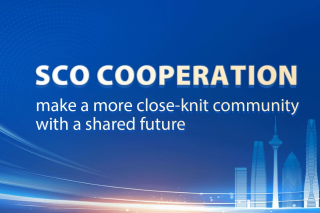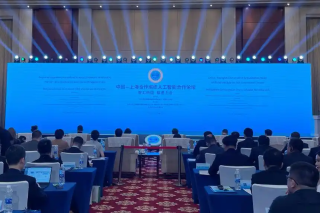Lian Sheng Zhai, a time-honored brand of Tianjin


Works of Lian Sheng Zhai [Photos/tianjinwe.com]
Embroidery, a world-renowned Chinese traditional folk art, has a long history of over 3000 years. In ancient China, women had to learn to embroid, so embroidery was known as Nv Gong (work of women). Endowed with exceptional advantages in embroidery, Tianjin, collectively with Beijing and Hubei, is where Jing Embroidery originates.
In accordance with historic records from the Tianjin Archives, in the nineteenth year under the reign of Emperor Guangxu in Qing Dynasty (1893 A.D.), Li Jifang founded Lian Sheng Zhai Shoes and Hats in the Guyi Street in an old district of Tianjin city. When the shop was established, it focused on Jing Embroidery. As time went by, the technique was switched to the emulational embroidery advocated by Master Shen Shou, which was a synergy of traditional Su Embroidery and western embroidery. Lian Sheng Zhai was known for making refined embroidery palanquins and Chinese wedding dresses. Its masterpieces of embroided wedding gowns and palanquins from a hundred years ago are now part of the collection in Yang Liu Qing Shi Family Museum. These works are delicate to the details, with exceptional designs of patterns and use of bright yet balanced color tones.
Embroidery Master Shen Shou's presence injected vitality to the shop's development, making it a turning point in the long developmental history. Upon the order of Empress Dowager of Cixi, the Ministry of Commerce established the women's embroidery school, with Yu Fu serving as its general manager, and Shen Shou serving as the head coach. It was the first official embroidery school in China. After the Revolution of 1911, the embroidery school ceased operations, which has led to Shen Shou's moving to Tianjin with his whole family. He started his own embroidery school in Tianjin and launched open enrollment.

110-year-old embroidery tool of Lian Sheng Zhai
Lian Sheng Zhai was dominated by the style of Jing Embroidery before students were sent to learn from Shen Shou. After some time, successor to the shop developed new stitching techniques, and created the unique Lian Sheng Zhai embroidery techniques. Using these techniques, one could make picture-like embroidery works with high artistic values. According to narratives of a successor, many foreigners sent their photographic works and oil paintings to be made into embroidery back then by Lian Sheng Zhai.
Li Xinghuai was the second-generation successor of Lian Sheng Zhai. He took over the business from his father. When Shen Shou started an embroidery school in Tianjin, Li Xinghuai sent staff to attend Shen's courses, and successfully introduced the concept of Embroidered Picture to the shop. Utilizing the geographical advances of Tianjin being a port city and foreign settlements, he developed the Lian Sheng Zhai embroidery techniques based on oil paintings, and offered order services.
The business was then passed down to the third-generation successor Xin Yuzhen (1921-2002). She learnt the emlulational techniques from the embroidery staff of Lian Sheng Zhai. In the 1950s, Lian Sheng Zhai was restructured as The Third Garment Factory in the reform of public-private joint management. After the reform and opening up, Xin Yuzhen and her family bought off the shop and brand of Lian Sheng Zhai, and worked to resume and advocate the Lian Sheng Zhai embroidery techniques.
The fourth-generation successor, Wu Qingzhen (1957-now) is the youngest daughter of Xin Yuzhen. She learnt from her mother since her childhood, and developed a great passion for embroidery. Over the years, she has grown to be a veteran with in-depth knowledge of the embroidery business. Wu serves as the Technical Director and Sales Manager of the Artwork Sales Department of the Company. Additionally, she was involved in the preparation of Lian Shen Zhai Broidery Art Museum, and acts as the vice curator of the museum.

Embroidery works of Lian Sheng Zhai
Today's Lian Sheng Zhai
The re-privatized Lian Sheng Zhai has established an embroidery base in Suzhou, and also established the modern Lian Sheng Zhai techniques. The century-old techniques by Lian Sheng Zhai have survived and even prospered in the modern world. The new techniques synergize the strengths of varied embroidery schools while upholding Lian Sheng Zhai's unique style of refinement and delicacy. In its depiction of figures, animals, flowers, and landscape, the artistic appeal of embroidery is at its best.
Wu Shaodong, nephew of the fourth-generation successor Wu Qingying, is the company's fifth generation successor (1982 to now). He joined Lian Qing Zhai after graduation from university. In addition to operational responsibilities, he learns from his aunt systematic theories and techniques of embroidery, and has visited Zhejiang and Jiangsu provinces where embroidery first originated for further study.
Lian Sheng Zhai is an innovator of embroidery techniques, and also a pioneer in integrating embroidery with Tianjin local culture. Since the era of foreign settlement in the Republic of China, the company has fully capitalized on the advantages of Tianjin as a port city, taken in foreign arts, and combined them with local culture. Thanks to new channel of foreign trade, Lian Sheng Zhai enjoyed spiking sales, and contributed to promotion of local culture.
Lian Sheng Zhai Embroidery Art Museum has two treasures, Scene of Goddess' Divine Visit and Riverside Scene at Qingming Festival.
The century-old brand Lian Sheng Zhai has never ceased its pursuit of art and ultimate embroidery skills. In 2009, it was recognized as a "Tianjin Time-honored Brand". From a small shop with self-owned workshop, it has grown to become a private business with full-out capacity of production, processing, exhibition, and sales.
In 2014, with support from the government, the company established the Lian Sheng Zhai Emboidery Art Museum, which offers free access to the public since inception. It sets to provide in-depth explanation of the history of Chinese embroidery and the Lian Sheng Zhai embroidery techniques. In order to promote embroidery techniques and culture, the company also plans to launch its embroidery school in Tianjin to offer free embroidery courses to those who have an interest in embroidery, especially the younger generations.

Copyright ©
Tianjin Municipal Government. All rights reserved. Presented by China Daily.
京ICP备13028878号-35



